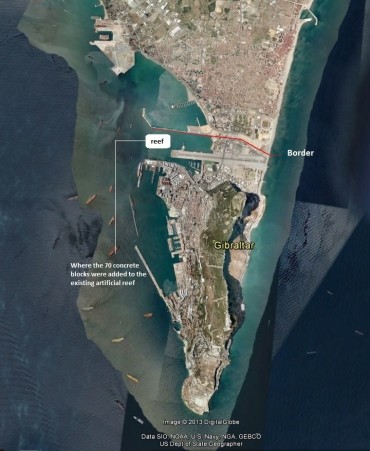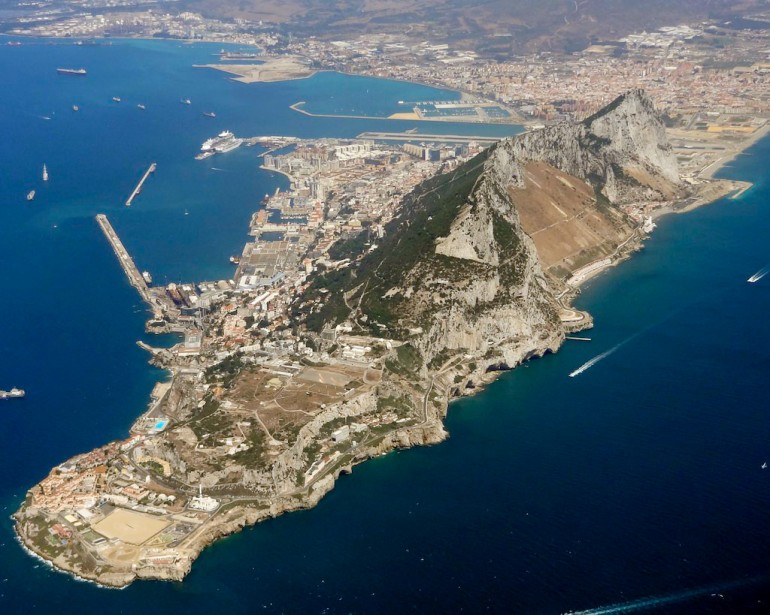Anything and everything has already been written about Gibraltar, to say the least.
At first glance, this independent territory of hardly 7km2 seems rather peaceful. Through the years, Gibraltar has even become a tourist destination appreciated for its medieval city, its wild monkeys (Barbary macaques), its yacht harbour, its trendy restaurants and especially for its shopping that is not subject to VAT.
Stepping back, it is hard to understand why this piece of rock that is attached to the Iberian Peninsula is still British land today. Yet, history had taught us that the United Kingdom has fought, often literally, to keep its precious overseas territories: the Islands of Bermuda, the Falkland Islands, the Cayman Islands… Gibraltar is no exception.
For it is in history that we need to look in order to dissect the current situation. It is in the year 1713 that the Kingdom of Spain puts an end to the War of Succession by handing over to Britain the strategic territory of Gibraltar. This was formalised with the Treaty of Utrecht.
Since that day, the Hispanic government never ceased to claim the return of propriety on the Rock. This territory has been poisoning the Spanish-English relations for more than 300 years.
Today, it is the stretch of sea around Gibraltar that is causing a very heated discussion. Indeed, the weakness of the Treaty of Utrecht is that it fails to mention the exact legal status of the international waters. Spain took advantage from this vagueness and has been declaring that this part of the Mediterranean is under its control. Mostly for fishing.
 The only problem is that the 1982 United Nations Convention on the Law of the Sea (UNCLOS) specifically stipulates that each coastal country will have full sovereignty on a stretch of sea of a maximum of 12 nautical miles offshore from its coast. It is a right that is inherent to every state that ratified the convention. Being part of the EU, Gibraltar is entitled to this right, even though for historical reasons it currently only claims 3 nautical miles of sea.
The only problem is that the 1982 United Nations Convention on the Law of the Sea (UNCLOS) specifically stipulates that each coastal country will have full sovereignty on a stretch of sea of a maximum of 12 nautical miles offshore from its coast. It is a right that is inherent to every state that ratified the convention. Being part of the EU, Gibraltar is entitled to this right, even though for historical reasons it currently only claims 3 nautical miles of sea.
In the early 70’s, Dr Eric Shaw, the present Head of the marine section of the Natural History & Ornithological Society of Gibraltar, discovered that the waters of the Bay of Gibraltar are falling victim to the overfishing and to the commercial traffic. The depletion of stocks in the bay seems inevitable. He came up with a plan that was ahead of its time: sink at the bottom of the sea a bunch of old tires, as well as car and boat wrecks that he was able to collect in the area. These various objects emulated shelters for the many marine species. In 1974, Gibraltar was home of the first artificial reef in Europe!
“There was just sand before and no life. The seabed has been replaced by an oasis of highly diverse marine life. You will find corals, gorgonians, lobsters and crabs. There are sponges, anemones, octopus and eels. There are shoals of fish, small and large, from anchovies and bream, to scorpion fish and bass, explains Dr Shaw. Since we started building it 30 years ago, no-one has ever complained about it. We have received no letter or complaint in 30 years. All the Spanish authorities have ever asked us is how do we construct it…”
 The 2012 study entitled « The Management of Marine Living Resources in the Waters around Gibraltar”, co-authored by Chris Tydeman, confirms that today this area is a biodiversity hotspot. On the crossroads of the Atlantic and the Mediterranean, and between Europe and Africa, this body of water is rich with migratory fish as well as “sedentary” species.
The 2012 study entitled « The Management of Marine Living Resources in the Waters around Gibraltar”, co-authored by Chris Tydeman, confirms that today this area is a biodiversity hotspot. On the crossroads of the Atlantic and the Mediterranean, and between Europe and Africa, this body of water is rich with migratory fish as well as “sedentary” species.
All was going fairly well until last July. In an effort to recolonize the lifeless sandy seabed close to the airstrip of the airport, the government of Gibraltar decided (independently from Dr Eric Shaw’s trust) to sink 70 concrete blocs. This addition to the existing artificial reef was one too many for the Spanish fishermen who claim that this precise place was the privileged fishing spot of the boat “Divina Providencia”.
“Conch raking fishing was taking place in that area, clarifies Dr. Shaw. This method of fishing is solely responsible for the disappearance of the last stands of Posidonia Oceanica in Gibraltar’s waters, and was made illegal under Gibraltarian Law with the Nature Protection Ordinance of 1991”.
“To the best of my knowledge, adds Chris Tydeman, the Divina Providencia fished for whatever it could catch but mostly used a clam raker to get poor (and often undersized) catches of clams. In no way can the catches be described as high value”.
Much to everyone’s surprise, and in retaliation to the sinking of the concrete blocks, the Iberian government followed the fishermen’s lead and decided to multiply searches of vehicles at the border. The pretext was to look for cigarettes that are often smuggled to Spain from the free of VAT Gibraltar, and these extensive searches resulted in endless waiting lines for everyone, not only cars entering Spain.
On the other hand, it is quite easy to understand the Spanish authorities’ frustration. Gibraltar is home of roughly 53’000 public limited companies, while the current population of the Rock amounts to around 30’000 people… In a challenging economic climate for most of the European countries, let alone for Spain, the presence of this tax haven with a flourishing economy is an affront. Maybe one too many.
Finally, to cap it all with this economico-historical imbroglio between these two nations, Great Britain maintains in Gibraltar one of its most strategic military bases. This is definitely a topic on which the UK will remain intransigent.
Will this 21st century crisis have the power to awaken a succession war that hasn’t yet been digested?

